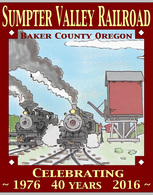

Reference Data.
Sawmills.Challenge mills.
Purchased ca. 1873 to 1879 from Union Lumber Co.
Beanville mill
Built ca. 1888.
Owl Gulch mill
Built ca. 1892.
Challenge Railroad
1884-1892
Length: Approx. 6 miles
Owl Gulch Railroad
1892-1894
Length: Approx. ¾ mile
A. M. Leach Lumber Company.
By Randy Hees.Andrew Martin Leach had been born in Vermont in 1841 to a lumbering family. By 1863 he had arrived in the Yuba County foothills and quickly established a general store. He began buying a number of small sawmills and timber land in the area in 1873, mostly from the Union Lumber Company. By 1879 he owned the Deadwood, Cottage, Clipper, Diamond Springs, Empire, Woodville and Challenge mills. These were all relatively small sawmills.
In 1877 Leach began to upgrade the Challenge Mill, adding a steam engine and boiler, more than doubling its capacity. Also in 1877 he began construction of a 50 mile long “V” flume1. The flume terminated at Moore’s station2 on the line of the Southern Pacific Railroad where Leach built a box factory and planning mill. Leach found an additional source of income selling the water from the flume to farmers. At least initially most of his mills were located along the flume.
In 1884 Leach added a logging railroad at Challenge, apparently designed and built under the supervision of R. E. Woodward, a noted civil engineer3. Several of the mills burned after 1886, with most of the loses uninsured.
The project, mills, flue, railroad and box and planning mills were capital consumptive. It is likely that Leach had to reach out to investors and partners (I saw one report on a partner in the planning mill). Eventually Leach incorporated the business as the Leach Lumber Company in 1890 with Leach and his wife, and San Francisco land investors, Jacob Levi Jr., Jacob Levi Sr., Otto H. Greenewold as directors. 4
As the enterprise expanded, at least one steam donkey and a steam road tractor were added. The railroad was extended several times, eventually to a new mill at Beantown, which was not directly served by the flume, and the railroad was adapted to haul cut lumber.
In 1892 in a search for new timber, Leach moved his railroad to the end of the flume at Owl Gulch. There he built a new railroad about a half mile long.
The Silver Panic of 1893 resulted in a business depression across the west, and the lumber industry was badly impacted. Leach’s business failed in 1894 was reportedly taken over by Levi and Greenwald of San Francisco, who were directors of the company.
The operation, Mills, flumes and the railroad was abandoned in place. About 1902 the locomotive was hauled by wagon to Marysville for shipment to a new owner5. Many rails were reportedly salvaged for use in local mines. The rest of the railroad was left behind, apparently to fall victim of World War II scrap drives.
2. Moore’s Station was renamed Honcut when a post office was established in 1878.
3. Locomotive Charles Kohler was ordered in Woodward’s name.
4. San Francisco Call, 20 September 1890.
5. The locomotive is believed to have been sold to the “San Francisco Quarries Company” at a San Rafael quarry. It remains, disassembled and partially scrapped at the McNear Company plant. (Pacific News, Feb. 1974) San Francisco Quarries was owned by Anison Blake, of the firm Blake Bros. Marin County Tocsin, 21 Feb. 1914.
Bibliography
Myrick, David, Railroads of Nevada and Eastern California, Vol. 3, University of Nevada Press, Reno & Las Vegas, 2007
Philip M McDonald and Lona F Lahore, Life in Challenge Mills, Yuba County, California, 1875-1915, With Emphasis on its People, Homes, and Businesses, US Dept of Agriculture, Forest Services, Pacific Southwest Research Station, General Technical Report, PSW-GTR-239, January 2013.
Philip M McDonald and Lona F Lahore, Lumbering in the Northern Sierra Nevada: Andrew Martin Leach of Challenge Mills, Pacific Historian, Vol XXVIII, No 2, pgs 18-31.
Anon, Is Charles Kohler in San Rafael? Pacific News, February 1974
Reference Material Available Online:
Equipment Roster.
Locomotives.Charles Kohler1, 0-6-0 Baldwin Locomotive Works, class 6-10d-2, c/n 7362, 8”x12”, 28” drivers.
Weight approx. 15 tons, Equipped with a 4 wheel tender.
Rolling Stock.
McDonald and Lahore say the line had seven flat cars, and note that “a forester’ found the remains of a car in Owl Gulch, with wheels marked “Marysville Foundry, 1870” but photographs show wood framed, pedestal log disconnect log trucks, of the style built by the Carter Brothers and other west coast builders after 1874. A photograph believed from July 1886 shows the Kohler pulling three covered excursion cars. These appear to be built on disconnect log trucks.
Photographs.
Collected A. M. Leach Lumber Company Photographs.
Images collected from private collections, libraries and historical societies.



